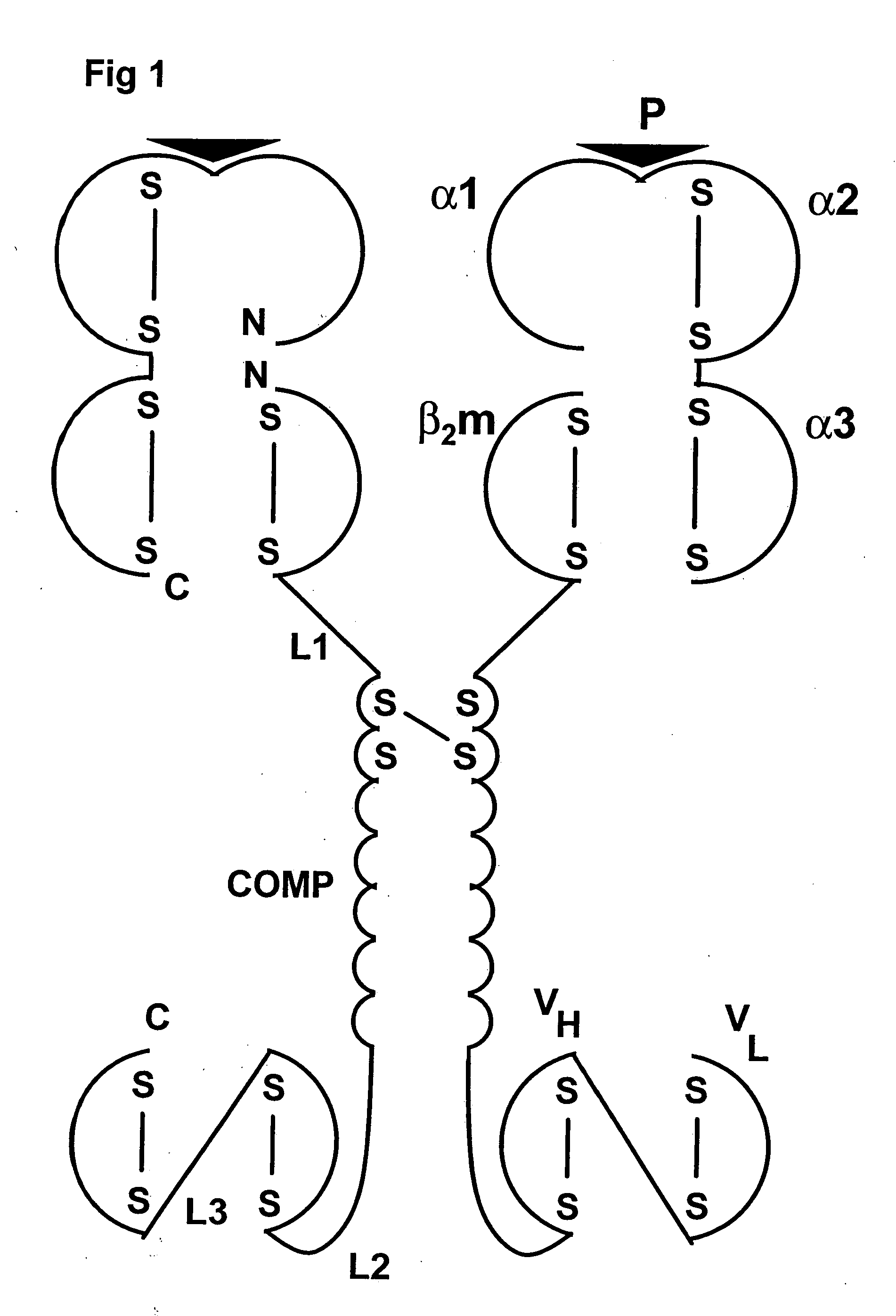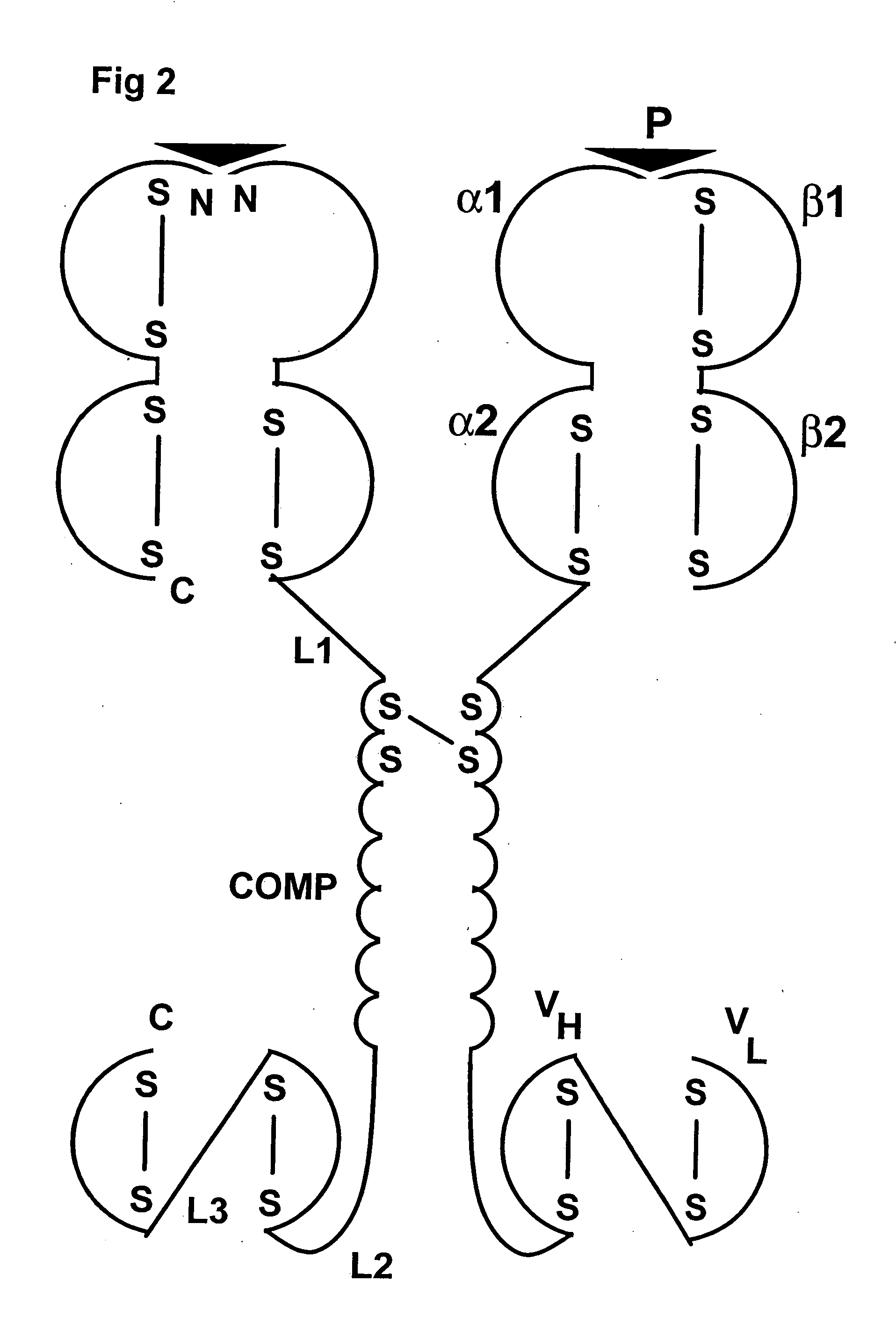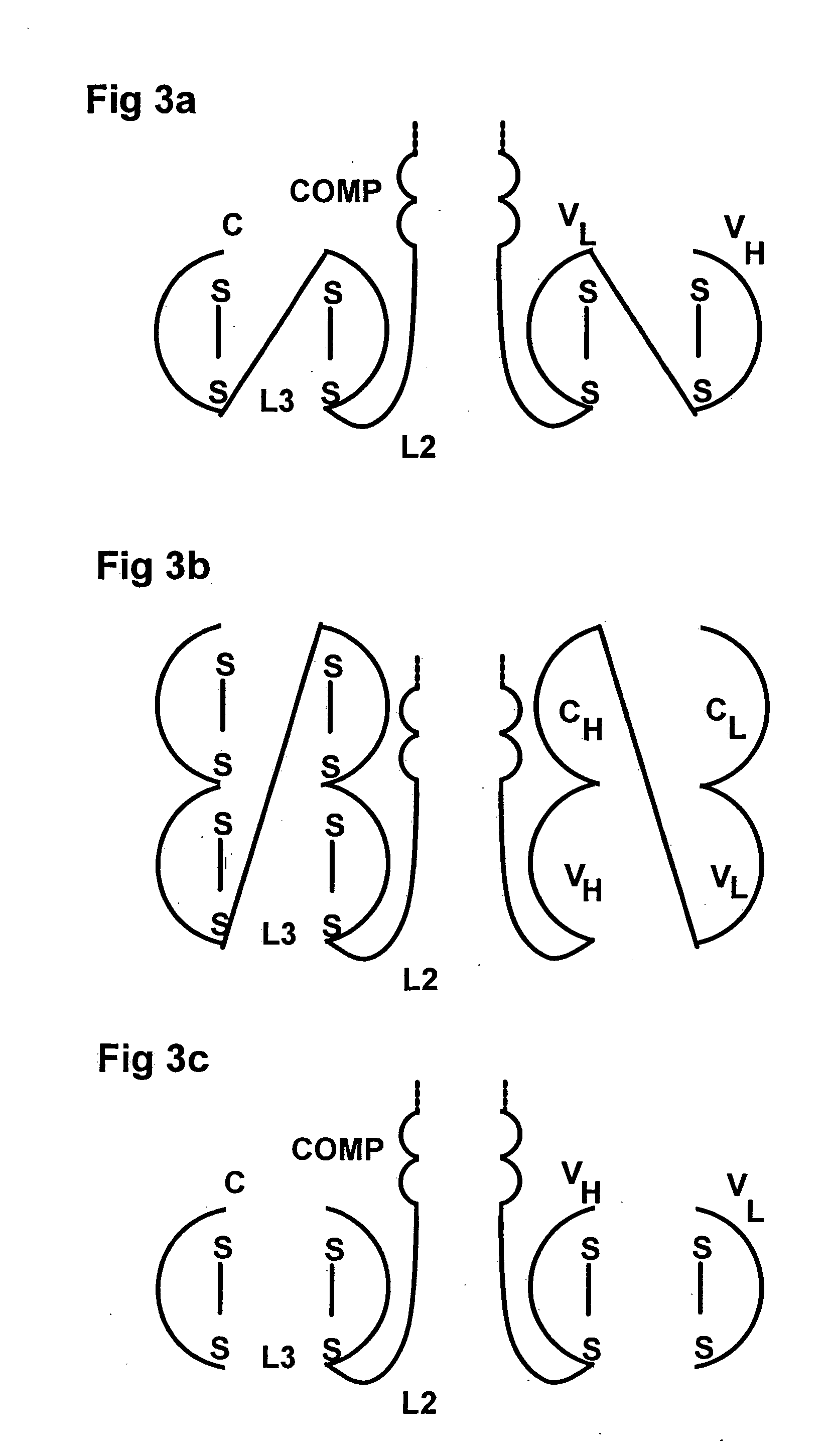Chimeric MHC protein and oligomer thereof for specific targeting
a technology of mhc protein and specific targeting, which is applied in the field of chimeric mhc protein, an expression cassette, and can solve the problems of significant loss of active material, potential unacceptable toxicity and immunogenicity of using non-human content in the mhc-targeting complex of the prior, and the loss of active material
- Summary
- Abstract
- Description
- Claims
- Application Information
AI Technical Summary
Benefits of technology
Problems solved by technology
Method used
Image
Examples
examples
[0110] The following is a detailed example for cloning, expressing, and purifying a pentameric class I MHC complex, which comprises a chimeric fusion between β2m, COMP, and an anti-CD20 scFv. The chimeric β2m-COMP-scFv protein is expressed in insoluble inclusion bodies in E. coli and subsequently assembled as pentameric β2m-COMP-scFv in vitro. The pentameric class I MHC peptide complex is then formed in a second refolding reaction by combining β2m-COMP-scFv pentamers and the human MHC class I a molecule known as HLA-A*0201, in the presence of an appropriate synthetic binding peptide representing the T cell antigen. In this example, a well characterized antigen derived from Epstein-Barr virus BMLF1 protein, GLCTLVAML (a.a. 289-297) [SEQ ID NO: 2], is used.
[0111] 1. Molecular Cloning of the β2m-COMP-scFv Construct
[0112] The strategy involves the sequential cloning into pET-24c vector of β2m, yielding a construct referred to as pETBMS01, followed by the sequential insertion of the ol...
PUM
| Property | Measurement | Unit |
|---|---|---|
| pH | aaaaa | aaaaa |
| concentration | aaaaa | aaaaa |
| concentration | aaaaa | aaaaa |
Abstract
Description
Claims
Application Information
 Login to View More
Login to View More - R&D
- Intellectual Property
- Life Sciences
- Materials
- Tech Scout
- Unparalleled Data Quality
- Higher Quality Content
- 60% Fewer Hallucinations
Browse by: Latest US Patents, China's latest patents, Technical Efficacy Thesaurus, Application Domain, Technology Topic, Popular Technical Reports.
© 2025 PatSnap. All rights reserved.Legal|Privacy policy|Modern Slavery Act Transparency Statement|Sitemap|About US| Contact US: help@patsnap.com



